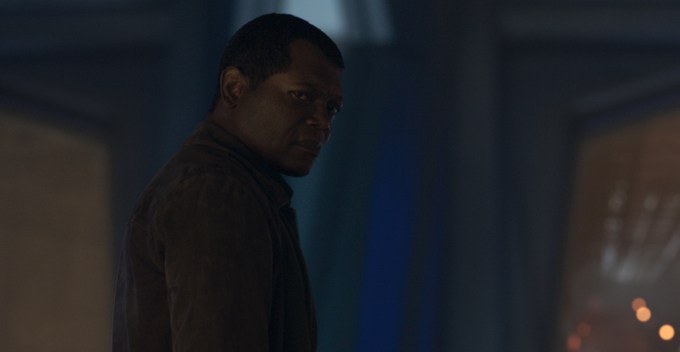“Captain Marvel” isn’t a bad movie, exactly.
It seems, at this point, that Marvel’s moviemaking machinery is incapable of producing a genuinely terrible film. There’s no “Batman v. Superman: Dawn of Justice” or “Suicide Squad” in the Marvel filmography, just “Thor: The Dark World,” “Ant-Man” and “Doctor Strange” — movies that are fine but forgettable.
Still, I wanted more than that for “Captain Marvel,” and I suspect that I’m not alone.
That’s because after 20 films, Marvel Studios is finally giving a woman top billing. It’s “Captain Marvel,” full stop, and the film was also co-directed by a woman — Anna Boden, who directed and co-wrote the film with her regular collaborator Ryan Fleck. As a result (and also in response to star Brie Larson’s efforts to make the press tour more inclusive), the movie has predictably attracted its share of online trolls.
So it’d be nice to report that “Captain Marvel” is an absolute triumph. The fact that it’s not has nothing to do with Larson, who plays Carol Danvers (the current incarnation of Captain Marvel) with a winning mix of charm and determination. The problem, I suspect, lies in the movie’s depiction of the Captain Marvel character.

Marvel Studios’ CAPTAIN MARVEL..Nick Fury (Samuel L. Jackson) ..Photo: Film Frame..©Marvel Studios 2019
When the story begins, she isn’t Captain Marvel per se. Instead, she’s an amnesiac soldier-in-training known as Vers, who serves an alien race known as the Kree in their war against their shapeshifting enemies, the Skrulls.
As the movie goes on, the story eventually brings us to Earth in the 1990s, where we eventually learn more about Vers. Still, both her backstory and her pryotechnic powers remain abstract: When the credits rolled, I still thought of her as a blank slate, and while Larson commits to the handful of big, heroic that the script gives her, the lines feel more like generic messages of empowerment, rather than dialogue that really shows us who the character is.
Luckily, though Captain Marvel remains a cipher, she’s surrounded by a strong supporting cast, including Samuel L. Jackson and Ben Mendelsohn, both of them transformed — Mendelsohn (who seems completely incapable of being boring on-screen) into a goblin-like Kree soldier, Jackson into a facsimile of his younger self.
In fact, the CGI technology that Marvel has been using to de-age its older actors is at its best here, largely avoiding the uncanny valley feeling that I got in “Captain America: Civil War” and “Ant-Man and the Wasp.” And the middle stretch, which pairs up Jackson and Larson on a buddy comedy-style road trip, is probably the film’s highlight.
Unfortunately, the genuinely funny character moments have to share screentime with by-the-numbers Marvel plot, and with tired jokes that harp on the ’90s setting. (Though the audience at my preview screening seemed to dig the period humor — maybe it depends on whether you find the sight of a Blockbuster Video, or of Brie Larson wearing a Nine Inch nails T-shirt, to be inherently funny.)
If anything, this feels like an illustration of how remarkable “Wonder Woman” and “Black Panther” were: They broke down barriers in on-screen representation, but they managed to be fun and memorable (and, in the case of “Black Panther,” a genuinely great film) at the same time.
With “Captain Marvel,” on the other hand, we get the first in what may be the new standard. Now women and minorities can star in their superhero films, and they can be just as middle-of-the-road as the ones featuring white guys.
Source: Tech Crunch

